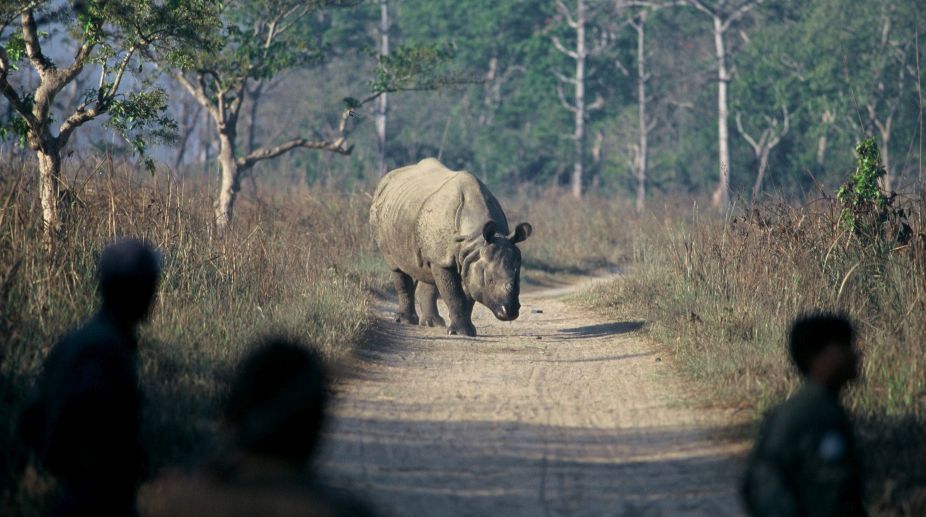Enjoy ecological wonders with the thrill of wildlife in Madhya Pradesh
Adventure, discovery, and the thrill of the unknown are calling!

(Photo: Getty Images)
When it comes to conserving rhino population in West Bengal, the two famed national parks, namely, Jaldapara and Garumara serve as the best examples. A study taken up by Amal Bhattacharya, professor of zoology, Raigunj University, themed “Ecology and behaviour along with conservation practises of the Great Indian one-horned rhino at Jaldapara National Park, Garumara and Kaziranga National Park” aims to highlight the conservation practises that need to be adopted by the authorities of the national parks for conserving rhino population in future.
The study began way back in 1980 with financial aid from University Grants Commission and is now a single-handed endeavour of the researcher. Amal Bhattacharya explained, “The rhino population in Jaldapara National Park was not sound before. It had only 18 rhinos in 1982 but now prides in preserving 186 of them. While it’s true that Jaldapara boasts of the largest number of rhino population, Garumara on the other hand has only 30.
Advertisement
But it has a thicker buffer zone that makes the rhinos safe. Both the national parks are protected areas for rhino habitat in Bengal.” Garumara National Park serves as a unique case of the best managed national park in the country. Rhinos are solitary in nature and do not prefer to live in herds like the Indian bison or the elephants. Bhattacharya further said, “Jaldapara National Park is quite small as compared to other national parks of Assam and Nepal. The national park faces the challenge of tremendous human population at its periphery. A sizeable population from the other side of the border settled down in the post-Partition period in fringe areas of the park like Falakata leading to reduction in the area of the buffer zone.”
Advertisement
As of now, the future of the rhinos in the national park appears bright. Bhattacharya added, “It’s been six years and there has not been a single incident of poaching in the Jaldapara National Park. The locals residing in forest hamlets have been sensitised and educated. They are cooperating with the forest officials to conserve the rhino population. There is peaceful existence of the ethnic tribes in the ongoing period. The future of the rhino population in the park depends on the socio-economic condition of the forest locals.”
One pertinent question arises here-what kind of steps does the park authorities need to initiate for the safety of the rhinos in future? Bhattacharya further added, “The forest officials need to have a sound communication system with the villagers. There should be approachable roads and forest guards need to be well-trained.
It is imperative for the forest officials to be highly dedicated towards their work. Watch towers need to be set up at the junction of the core area and buffer zone of the national park. More number of watch towers need to come up in the forest hamlets.”
Advertisement